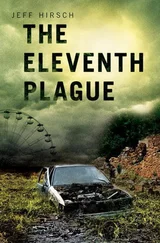Anthony Summers - The Eleventh Day
Здесь есть возможность читать онлайн «Anthony Summers - The Eleventh Day» весь текст электронной книги совершенно бесплатно (целиком полную версию без сокращений). В некоторых случаях можно слушать аудио, скачать через торрент в формате fb2 и присутствует краткое содержание. Жанр: Старинная литература, на английском языке. Описание произведения, (предисловие) а так же отзывы посетителей доступны на портале библиотеки ЛибКат.
- Название:The Eleventh Day
- Автор:
- Жанр:
- Год:неизвестен
- ISBN:нет данных
- Рейтинг книги:3 / 5. Голосов: 1
-
Избранное:Добавить в избранное
- Отзывы:
-
Ваша оценка:
- 60
- 1
- 2
- 3
- 4
- 5
The Eleventh Day: краткое содержание, описание и аннотация
Предлагаем к чтению аннотацию, описание, краткое содержание или предисловие (зависит от того, что написал сам автор книги «The Eleventh Day»). Если вы не нашли необходимую информацию о книге — напишите в комментариях, мы постараемся отыскать её.
The Eleventh Day — читать онлайн бесплатно полную книгу (весь текст) целиком
Ниже представлен текст книги, разбитый по страницам. Система сохранения места последней прочитанной страницы, позволяет с удобством читать онлайн бесплатно книгу «The Eleventh Day», без необходимости каждый раз заново искать на чём Вы остановились. Поставьте закладку, и сможете в любой момент перейти на страницу, на которой закончили чтение.
Интервал:
Закладка:
By 9:45, only six minutes after his initial warning, Scoggins was saying the plane “might not be a hijack … we’re just not sure.” By then, though, the Air Force was busy trying to get fighters to the scene, Cleveland airport was in a state approaching panic, and 1989’s pilots feared they might have a bomb on board.
“I understand,” Cleveland control radioed Captain Werner meaningfully, “you’re a trip today,” The word “trip” was an established code for hijack, and Werner assured control he was not—only to be asked twice more. Once on the ground, at 10:18, he was ordered to taxi to the “bomb area,” far from the passenger terminal. Passengers and crew would not be allowed to disembark for another two hours, and then under the wary eyes of gun-toting FBI agents and a SWAT team in full body armor.
It had all been, a Cleveland controller would recall, like a “scene out of a bad movie.” Even before the innocent Delta 1989 landed, however, the latest phase of the aviation nightmare had become real-life horror—for Cleveland, for the Air Force team in its bunker, and, for the fourth time that day, for the nation. At 10:07, a phone call between the FAA’s Cleveland Center and NEADS produced a revelation.
FAA:
I believe I was the one talking about that Delta
1989 … Well, disregard that. Did you? …
NEADS: What we found out was that he was
not
a confirmed hijack.
FAA: I don’t want to even worry about that right now. We got a United 93 out here. Are you aware of
that
?
NEADS was completely unaware. During the wild-goose chase after Delta 1989, NEADS had been told nothing of the very real hijacking, also over Ohio, of United 93. An FAA controller had heard screams from Flight 93’s cockpit, followed by a hijacker’s announcement about a “bomb on board,” some seven minutes before Scoggins alerted NEADS to the imagined problem aboard Flight 1989.
The controller had reported the new hijack promptly, and word had been passed to FAA headquarters. Cleveland control then came up again, purposefully asking whether the military had been alerted. A quarter of an hour later, nevertheless, the following pathetic exchange took place:
FAA C
OMMAND
C
ENTER:
Uh, do we want to think, uh, about scrambling aircraft?
FAA H
EADQUARTERS:
Uh, God, I don’t know.
FAA C
OMMAND
C
ENTER:
Uh, that’s a decision somebody is going to have to make, probably in the next ten minutes.
FAA H
EADQUARTERS:
Uh, you know, everybody just left the room.
Five minutes after that, at 9:53 and as United 93’s passengers prepared to attack their captors, an FAA staffer reported that—almost twenty minutes after word of the hijack had reached the agency’s headquarters—senior FAA executive Monte Belger and a colleague were discussing whether to ask for fighters to be scrambled. Belger would tell the 9/11 Commission that he “does not believe the conversation occurred.”
At 10:03, ten minutes after the reported discussion, a full half an hour after FAA headquarters learned of the hijack, United 93’s passengers and crew all died when the airliner plunged into the ground in Pennsylvania. NEADS knew nothing at all of the airliner’s plight until several minutes later—and were then given only vague, out-of-date information.
“In a day when we were already frustrated,” the FAA’s Colin Scoggins recalled, “we were always a day late and a dollar short. We just could never catch up.”
THAT, THE LOGS and documents clearly show, is the true story of the effort to defend America on 9/11. Why, then, did senior military and political men say otherwise? Why, within days, did General Myers and Paul Wolfowitz suggest that fighters had been in pursuit of Flight 93 and would have been able to bring it down? Why did senior officers, and in particular General Arnold—who had been in charge at the NORAD command center in Florida on the day—make similar claims to the 9/11 Commission?
“We believe,” Arnold wrote as late as 2008, “we could have shot down the last of the hijacked aircraft, United 93, had it continued toward Washington, D.C.” It was a statement founded on sand, one that airbrushed out of history the inconvenient facts of the general’s previous claims. Four months after the attacks, he asserted that NORAD had already been “watching United Flight 93 wander around Ohio” at the time the Trade Center’s South Tower was hit. That strike had occurred at 9:03, twenty-five minutes before Flight 93 had even been attacked.
Two years later, as noted earlier, Arnold would claim that NORAD’s focus had been on Flight 93 by 9:24—when the hijack “was being pointed out to us very aggressively, I might say, by the FAA.” This assertion also suggested a magical feat by the military, that the Air Force had been concentrating on United 93 before the plane was seized. The documented reality—damning to the FAA—is that no one at the agency reported the hijack to NORAD in any way, let alone “aggressively,” until after it crashed.
General Arnold would eventually concede that his testimony had been inaccurate. What he, General Myers, and Deputy Defense Secretary Wolfowitz had said about Flight 93 had been nonsensical—though just how nonsensical would emerge only after the disentangling by Commission staff of a maze of logs and tapes—a prodigious task.
Why the officers initially told inaccurate stories is rather clear. In the fuzzy immediate aftermath of 9/11, before the facts and the timings could be analyzed, they conflated the flap over Delta 1989, the hijack that never was, with the very real hijack of Flight 93. That does not explain, however, why they continued to perpetuate the fiction long afterward, when there had been ample time to check the facts.
Former Commission analyst Miles Kara has likened NORAD’s account to an attempt to solve a Sudoku puzzle—fated to fail if a single early mistake is made. He put the inaccurate story down to shoddy staff work and repeated misreadings of the logs.
Commission general counsel Daniel Marcus, though, pointed to disquieting discrepancies, including the “suspicious” omission of key times from an FAA document, the alteration of a NORAD press release, and a disputed claim about the reason for a supposed tape malfunction. Referring the matter to the inspectors general of both the Department of Defense and the Department of Transportation, he raised the possibility that the FAA and Air Force accounts were “knowingly false.”
NORAD’s commander-in-chief, General Ralph Eberhart, for his part, had assured the Commission he and his fellow officers “didn’t get together and decide that we were going to cover for anybody or take a bullet for anybody.”
Senator Mark Dayton, speaking at a hearing on the Commission’s work, would have none of it. “NORAD’s public chronology,” he declared, “covered up … They lied to the American people, they lied to Congress, and they lied to your 9/11 Commission, to create a false impression of competence, communication, coordination, and protection of the American people … For almost three years now NORAD officials and FAA officials have been able to hide their critical failures, that left this country defenseless during two of the worst hours in our history.”
The senator called on President Bush to fire “whoever at FAA or NORAD, or anywhere else who betrayed the public trust by not telling us the truth. And then he should clear up a few discrepancies of his own.”
“At some level of the government, at some point in time …,” Commission counsel John Farmer has written, “there was a decision not to tell the truth about what happened.” The troubling questions about the way the government really functioned on 9/11, Farmer made clear, also involved the White House.
Читать дальшеИнтервал:
Закладка:
Похожие книги на «The Eleventh Day»
Представляем Вашему вниманию похожие книги на «The Eleventh Day» списком для выбора. Мы отобрали схожую по названию и смыслу литературу в надежде предоставить читателям больше вариантов отыскать новые, интересные, ещё непрочитанные произведения.
Обсуждение, отзывы о книге «The Eleventh Day» и просто собственные мнения читателей. Оставьте ваши комментарии, напишите, что Вы думаете о произведении, его смысле или главных героях. Укажите что конкретно понравилось, а что нет, и почему Вы так считаете.











